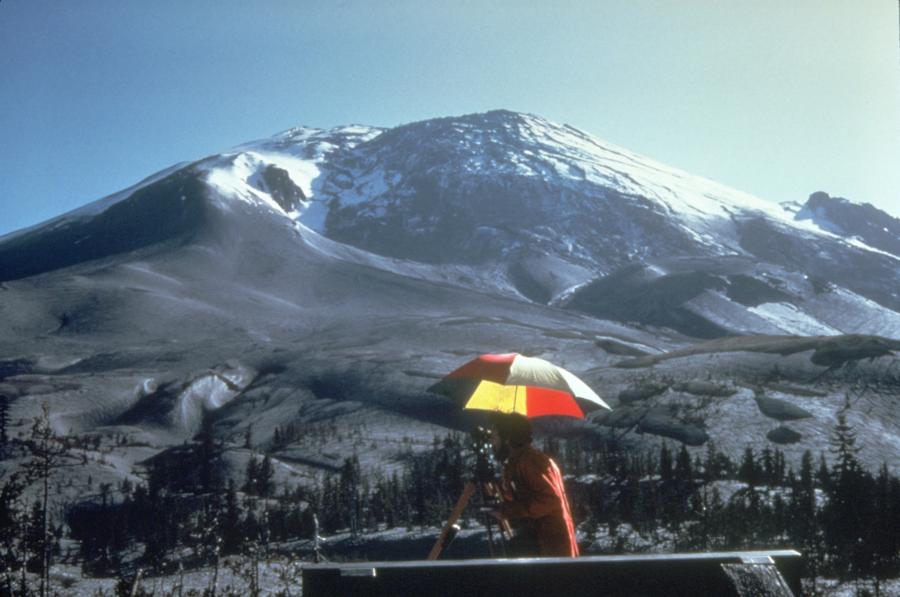A good portion of my rather large family lives in the
pacific northwest, specifically Wenatchee, WA a few hours outside of Seattle. During trips to see family, we have driven as
close as I have ever been to a volcano – Mount St Helen’s. It hasn’t really been all that long since
Mount St. Helen’s erupted explosively, throwing nearly a cubic kilometer of ash
and rock into the air. You can still see
the horseshoe-shaped crater, between 1 and 2 miles wide, carved out of the
volcano.
 |
| Bulge on the north side of Mount St. Helens developed as magma pushed up within the peak before May 18, 1980. View from the northeast. |
The volcano has layers of ash, pumice, and basalt that
indicate varying degrees of viscosity and gas content. The ash and pumice indicate an explosive
eruption caused by highly viscous lava with high gas content. The basalt was likely formed by low viscosity
lava flows, due to its low silica content, that move relatively quickly.
 |
| Steam-blast (phreatic) eruption from the summit crater of Mount St. Helens on April 6, 1980. Aerial view to the southwest. |
While the volcano remained active up until 2008, it is no
longer considered in imminent danger of an imminent eruption. Mount St. Helens is still considered an
active volcano and regularly have seismic activity below the surface. The volcano is located at the edge of the
Juan de Fuca plate, where it meets the North American as part of the Cascade
Range. The fact that this area is at the
edges of these plates and has frequent earthquakes, indicates that there will
likely be continued eruptions well into the future. In fact, this area is dotted with many, smaller
volcanos.
 |
| Mount St. Helens crater, with the Pumice Plain in the foreground. October 2004 |
References
1980 Cataclysmic Eruption. (n.d.). Retrieved November 25,
2019, from
https://volcanoes.usgs.gov/volcanoes/st_helens/st_helens_geo_hist_99.html
Cascades Volcano Observatory (CVO). (n.d.). Retrieved
November 25, 2019, from https://volcanoes.usgs.gov/observatories/cvo/
Why Study Cascade Volcanoes? (n.d.). Retrieved November 25,
2019, from https://volcanoes.usgs.gov/observatories/cvo/cascade_volcanoes.html
Wikipedia contributors. (2019a, November 6). Mount St.
Helens. Retrieved November 25, 2019, from
https://en.wikipedia.org/wiki/Mount_St._Helens
Wikipedia contributors. (2019b, November 17). Cascade Range.
Retrieved November 25, 2019, from https://en.wikipedia.org/wiki/Cascade_Range
www.Mount St. Helens.com - Mount St. Helens Discovery Group,
LLC. (n.d.). MountStHelens.com Information Resource Center & Visitor Guide.
Retrieved November 25, 2019, from http://mountsthelens.com/
No comments:
Post a Comment